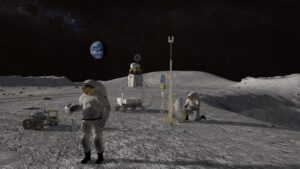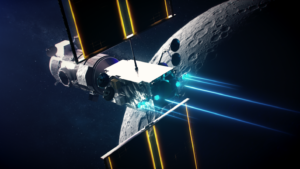
Another James Webb Space Telescope Update
Many of us are eagerly waiting for the James Webb Space Telescope to begin producing consistent images. While different from your typical telescope, Webb is expected to reveal many incredible things about the universe we live in and much more. Over the past few months, the next generation telescope has been very busy with deployments, alignment, and cooling down, just to name a few.
As of right now, Webb and NASA are addressing the removal of any small, residual positioning errors in the primary mirror segments. The MIRI instrument recently cooled down to its operating temperature as JWST gets closer and closer to being complete. NASA points out that Webb is currently on step 7, stage 3 of the Iterate Alignment For Final Correction process. This is the final step of mirror alignment for the telescope.
With Webb being an infrared telescope, it has to be very cold. This includes practically the entire observatory and especially the various crucial instruments throughout it. With the help of the sunshield and other unique components, Webb is very close to ready. Here I will go more in-depth into the JWST’s recent progress, current steps, and what exactly is next.
Webb’s Current Progress

For quite a while now NASA has suggested that Webb would be complete sometime in the summer. Based on recent progress and updates provided by the agency, it looks as if the JWST is right on schedule and close to being ready. Only a few days ago, on April 21st, NASA tweeted saying, “Is Webb at its final temperature? Almost! All of Webb’s instruments have reached their super cold operating temperatures, but the mirrors still have a bit of a ways to go. Remember: The colder the mirrors, the better we can #UnfoldTheUniverse!” Most recently we saw the Mid Infrared Instrument, or MIRI, reach its very cold operation temperature. A bit over a week ago, NASA continued the journey of commissioning the Webb telescope with the successful cooling of MIRI, through the critical ‘pinch point,’ down to its final operating temperature of less than 7 kelvins, or -447 degrees Fahrenheit. This was a precondition to completing the seventh and final stage of the mirror alignment process. The next steps include initial check-outs of MIRI and continuing on to the final stages of multi-instrument, multi-field alignment with all four science instruments.
Only days ago, NASA pointed out that The Mid-Infrared Instrument on NASA’s James Webb Space Telescope is now cooled by a gaseous helium cryocooler to under 7 kelvins. With the cooler in its final state, the Webb team is operating the MIRI instrument this week as part of seventh and final stage of the telescope alignment. This comes after applying the Field of View correction during step 6. Now, the key thing left to address is the removal of any small, residual positioning errors in the primary mirror segments. NASA will measure and make corrections using the Fine Phasing process (step 5). NASA will do a final check of the image quality across each of the science instruments; once this is verified, the wavefront sensing and controls process will be complete. As the agency goes through the seven steps of mirror alignment, they may find that they need to iterate earlier steps as well. The process is flexible and modular to allow for iteration. After roughly three months of aligning the telescope, the agency will be ready to proceed to commissioning the instruments. This also has to do with the temperature of different instruments throughout the telescope.
When the instrument is operating, the detectors and electronics produce heat, which is balanced by the cryocooler to keep MIRI at a stable, and very cold, operating temperature. The near-infrared instruments also warm up during operations and have to dissipate heat, although for these instruments this is done with passive cooling; the heat from the detectors and electronics is radiated into deep space. However, now that the instruments are at their operating temperatures, the telescope mirrors will also continue cooling down to their final temperatures, but they are not quite there yet. The primary mirror segments and the secondary mirror are made of beryllium and coated with gold. At cryogenic temperatures, beryllium has a long thermal time constant, which means that it takes a long time to cool or to heat up. The primary mirror segments are still cooling, very slowly. The secondary mirror, hanging out on the end of its support structure a long way from any heat sources, is the coldest mirror, currently at 29.4 kelvins. The 18 primary mirror segments range in temperature from 34.4 kelvins to 54.5 kelvins. An advantage of beryllium mirrors is that they don’t change shape with temperature the way glass mirrors would at these temperatures, so the temperature range does not affect the telescope alignment process. As of right now, four of the 18 mirror segments are above 50 kelvins: at 52.6, 54.2, 54.4, and 54.5. These four mirror segments emit some mid-infrared light that reaches the MIRI detectors. Since all the mirror temperatures are now below 55 kelvins, it is expected that MIRI will be sensitive enough to perform its planned science, but any additional cooling of these mirrors will only enhance its performance. The Webb team hopes to see the mirrors cool by an additional 0.5 to 2 kelvins.
The Next Steps

Now that we know some of the recent progress Webb has been making, we can take a closer look at the final steps necessary and when we should expect the telescope to be fully operational. As I partially mentioned prior, the JWST is on the 7th and final step of mirror alignment. After successfully completing all six prior steps, Webb is now finishing the final corrections. A big part of this has to do with the temperature of the telescope and its components. It’s important to point out that the angle that the sunshield presents to the Sun is called the pointing “attitude.” The tiny amount of residual heat that makes its way through the five-layer sunshield to the primary mirror depends on this attitude, and since the mirror segment temperatures change very slowly, their temperatures depend on the attitude averaged over multiple days. During commissioning, Webb is currently spending most of its time pointed at the ecliptic poles, which is a comparatively hot attitude. During science operations, the telescope will have a much more even distribution of pointings over the sky. The average thermal input to the warmest mirror segments is expected to go down a bit, and the mirrors will cool a bit more.
Later in commissioning, NASA plans to test the thermal dependence of the mirrors on the attitude. The agency will point Webb at a hot attitude for several days, and point Webb at a cold attitude for several days, in a process called the thermal slew. Specifically, thermal slew will soon be conducted to assess the Observatory’s optical performance at different thermal conditions caused by a slew through about 45 degrees in pitch. The observatory will be thermally stabilized at a ‘hot’ attitude for at least 4 days, then slewed to a ‘cold’ attitude for 14 days, and then finally reoriented back to the ‘hot’ attitude to complete the test. At each attitude, the Observatory pointing and wavefront stability, measured as a change in the wavefront error (wfe), will be monitored. Following the initial hot-to-cold slew and the final cold-to-hot slew, the wfe and pointing are expected to drift as the thermal condition of the Observatory changes. This test will be used to verify integrated modeling predictions of stability that will then be used to predict wavefront drift during normal science observations as the Observatory carries out its observing programs. While the integrated models have assessed the worst case hot to cold slew (i.e., maximum pitch, maximum roll to minimum pitch minimum roll), the hot and cold attitudes in this case have only been constrained to zones of plus or minus 5 degrees in pitch. This will tell NASA how long it takes for the mirrors to cool down or heat up when the observatory is at these positions for any given amount of time. This process is one of the next steps as Webb gets closer and closer to being complete. NASA is confident based on recent tests and procedures that the James Webb Space Telescope will be ready for different science operations this summer. As of right now, the telescope will continue to orbit L2 and work on temperature, instruments, and more.
Conclusion
There is so much we don’t know about the universe we live in. After the Hubble was launched and fixed it revealed incredible things thanks to different photos. Now in 2022, after decades of work and billions of dollars, the James Webb Space Telescope is almost ready for consistent science operations. Months ago the telescope was launched and has now completed hundreds of deployments, alignment, and cooling procedures. NASA predicts that in only a few months from now Webb will be ready. We will have to wait and see how it progresses and the impact it has on the space industry.



